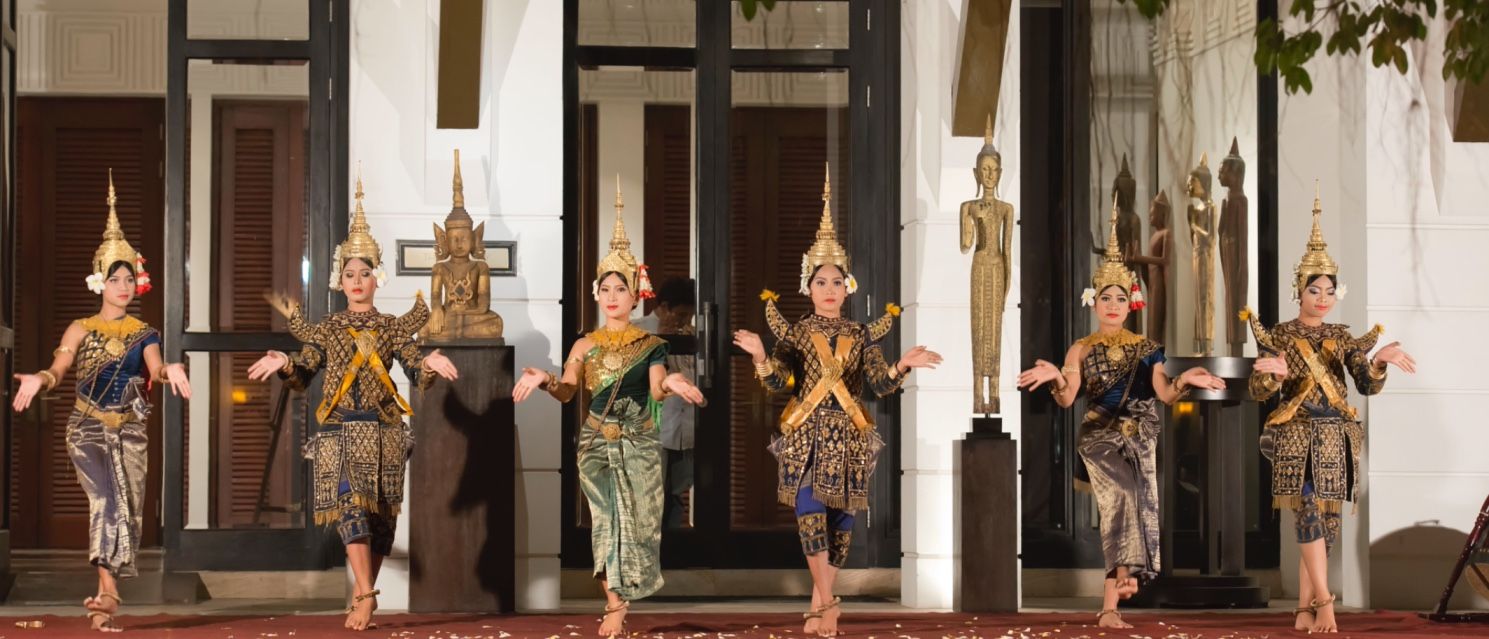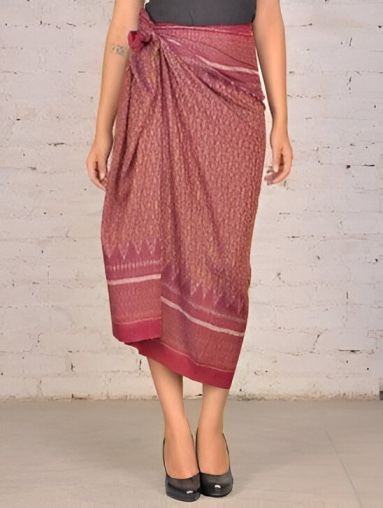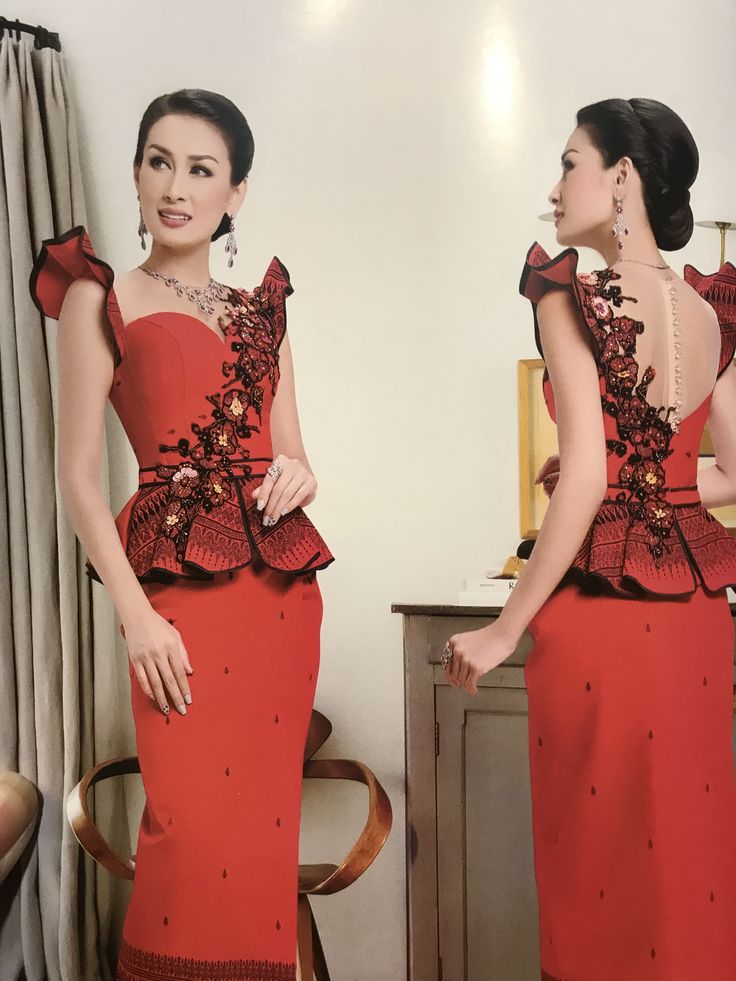Cambodian Traditional Dress, Clothing & Costumes
Cambodian traditional clothing, especially the Khmer Sarong, Sampot and Krama, has a rich history deeply connected to the nation’s cultural heritage. The Sampot, Cambodia’s emblematic garment, symbolizes national pride and embodies the cultural identity of the Khmer people.
Sampot, a traditional Cambodian garment, originated from the ancient Khmer people, as evidenced by images and sculptures at the Angkor ruins. Archaeologists trace the Khmer civilization back to the 2nd century BC, marking them as the first known civilization in Cambodia. They built a grand empire that thrived from the 9th to the 15th century, with Angkor as its capital.
Immerse yourself in the best experiences Cambodia has to offer with our carefully designed trip that caters to the needs of most discerning travelers, check out Cambodia Private Tours

Khmer Traditional Costumes
Cambodia values respectful attire, and the way people dress holds significant importance in the culture. Wearing casual clothing like shorts, skirts, or tank tops can be seen as disrespectful to Cambodia’s traditions and values. To ensure a respectful and memorable journey, embrace traditional Cambodian costumes, such as the Sampot. Wearing these traditional garments not only honors local customs but also enhances your travel experience, creating a joyful and immersive cultural experience in Cambodia.
1. Sampot

2. Sampot Chang Kben
Sampot Chang Kben, a variation of the Sampot, measures around 9 feet in length. In ancient Cambodia and some areas today, clothing distinctions exist between the rich, middle class, and poor. While Sampot was common among the lower class, Sampot Chang Kben was traditionally worn by wealthier women. This garment wraps around the lower body, resembling trousers more than a skirt. Today, it is typically worn on special occasions.

3. Sampot Phamuong
Sampot Phamuong, a highly popular Cambodian traditional clothing, features 52 vibrant colors woven diagonally across its surface. Crafted from 22 types of threads, this luxurious fabric incorporates intricate motifs, floral patterns, and geometric designs.
The most famous material used in Sampot Phamuong is golden silk, the primary fabric known for its prominence in Cambodia’s rich cultural heritage, especially in the Kingdom of Temples. This exquisite textile highlights the craftsmanship and cultural significance of Cambodian traditional clothing.
4. Sampot Hol: Skirt cloth
Sampot Hol, a form of traditional Khmer clothing, is created using an intricate resist-dyeing technique called “hol” or ikat. Influenced by the Indian patola textile art, Sampot Hol has evolved over centuries into a unique Cambodian fabric.
This distinctive cloth features two main weaving techniques: Chang Kiet, which wraps horizontal threads around vertical threads to form geometric patterns, and Twill Weave, which creates diagonal lines through a specific weaving method. Sampot Hol boasts over 200 geometric patterns, along with motifs of animals and flowers.
Traditionally, Sampot Hol combines three to five colors, such as yellow, red, brown, blue, and green, and is often worn on special occasions. Variations include Sampot Hol, Sampot Hol Por, Sampot Kben, and Sampot Holong. These traditional garments are often passed down as heirlooms, holding cultural significance in Cambodian society.

5. Sarong
The sarong, a key piece of traditional costume of Cambodia, is widely worn by the lower class for its comfort and practicality. Designed for ease of movement, it has become a popular choice for daily wear. The simplicity and convenience of the sarong make it an ideal option for both locals and tourists in Cambodia. Today, you’ll find sarong cloth available in many stores, offering comfort and style. This traditional Khmer attire remains a staple in Cambodian life, reflecting the country’s cultural heritage.

6. Krama: Cotton scarves
Krama, a signature piece of traditional Cambodian clothing, is a versatile cotton scarf synonymous with Cambodia. Widely used across the country, it serves multiple purposes depending on the region. Often worn around the neck, Krama adds a cultural touch to photos and daily life, whether in rural or urban settings. Farmers commonly wear it over their heads, while others use it as a sarong, towel, or even a baby hammock.
Once a traditional garment, the Krama Scarf has evolved into a national fashion trend. Traditionally made with mauve and white squares, today it comes in various sizes, shapes, and patterns. For a unique souvenir during your vacation in Cambodia, you can buy a Krama at local stores and capture the experience in a photo!

Av Pak: Traditional blouse-dress
Av Pak is a traditional Khmer blouse, also known as an “embroidered shirt.” This sheer, delicate top features golden thread embroidery, giving it a simple yet elegant appearance. Similar to the Chinese Kebaya, the Av Pak is often paired with the Sampot or Sampot Chang Kben, which cover the lower body as skirts or trousers. Together, these garments form a modern suit, worn by both Cham and Khmer people.
While the Av Pak is now reserved for festivals and special events, visitors can experience this piece of Cambodian traditional clothing by trying it on during their trip or purchasing it at local markets.

How to Wear Cambodia (Khmer) Traditional Dress?
When styling Cambodian traditional dress, particularly the Sampot, consider the occasion and your personal preferences. Both men and women wear Sampot during festivals, ceremonies, and daily activities. For men, the Sampot pairs well with a simple shirt or jacket, while women often combine it with the Av Pak blouse for a more formal look.
Whether dressing for a cultural event or casual day, the Sampot offers versatility in both style and comfort. Explore different ways to wear Cambodian traditional dress, mixing and matching accessories like the Krama scarf for a complete, authentic look.
Additionally, Ttraditional Cambodian costumes are worn on various occasions, including festivals, special ceremonies, and daily life. It’s important to select outfits that ensure comfort and ease for the wearer.
For women
- Sbai: This traditional shoulder shawl, often made from silk, cotton, or voile, is worn around the shoulders. It typically features plain colors or printed patterns and is secured with clips or pins.
- Aorng: Women wear short or long-sleeved blouses, often in bright colors, embellished with patterns or lace.
- Accessories: Enhance the outfit with necklaces, earrings, bracelets, and hair accessories.
For men
- Aorng: Men wear short or long-sleeved shirts, typically in solid colors or simple patterns, pairing them with traditional attire for a complete look.




